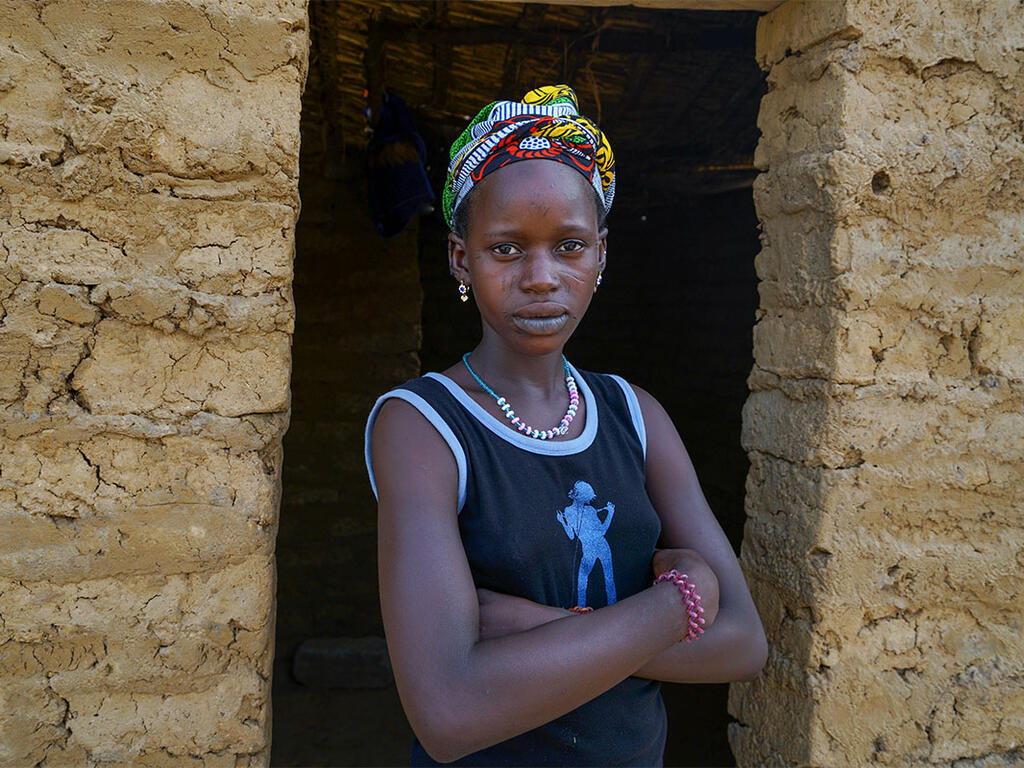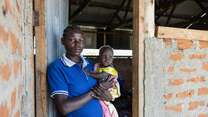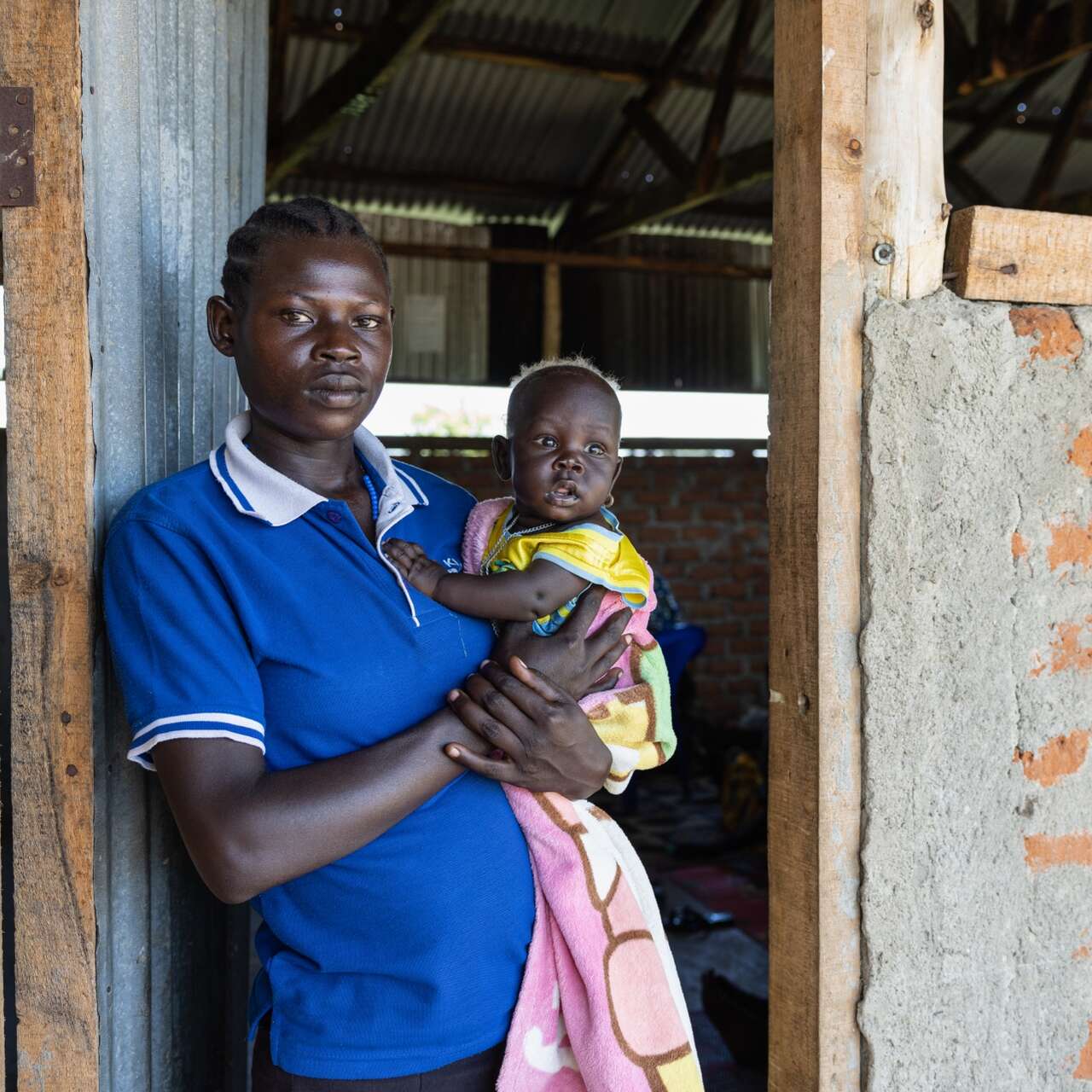
Gender-based violence (GBV) is present in every society around the world and takes many forms. We have a moral imperative to stop all forms of violence against women and girls, regardless of their backgrounds, experiences, or identities.
In crisis, whether conflict or natural disaster, the risk of GBV increases, and so does our collective need to act to prevent GBV before it happens or respond to the needs of women and girls when it does.
The IRC has been working specifically to prevent and respond to GBV since 1996, meaning we have nearly 30 years of experience in this critical area of work.
Women and girls are disproportionately impacted by all forms of GBV. Below, we consider why this happens, and what we can do to prevent it.
What is gender-based violence?
Gender-based violence (GBV) is an umbrella term for harmful acts of abuse perpetrated against a person’s will and rooted in a system of unequal power between women and men. This is true for both conflict-affected and non-conflict settings.
The UN defines violence against women as, ‘any act of gender-based violence that results in, or is likely to result in, physical, sexual or psychological harm or suffering to women, including threats of such acts, coercion or arbitrary deprivation of liberty, whether occurring in public or in private life.
Over one-third of women and girls globally will experience some form of violence in their lifetime. However, this rate is higher in emergencies, conflict, and crisis, where vulnerability and risks are increased and most often family, community, and legal protections have broken down.
Harm caused by GBV can be visible or hidden, and it also includes the threat of violence. GBV can take many forms, including: physical violence, such as assault or slavery; emotional or psychological violence, such as verbal abuse or confinement; sexual abuse, including rape; harmful practices, like child marriage and female genital mutilation; socio-economic violence, which includes denial of resources; and sexual harassment, exploitation and abuse.
While GBV most often refers to violence against women and girls, it can also affect other marginalized groups when violence is used to reinforce or maintain oppressive gender norms.
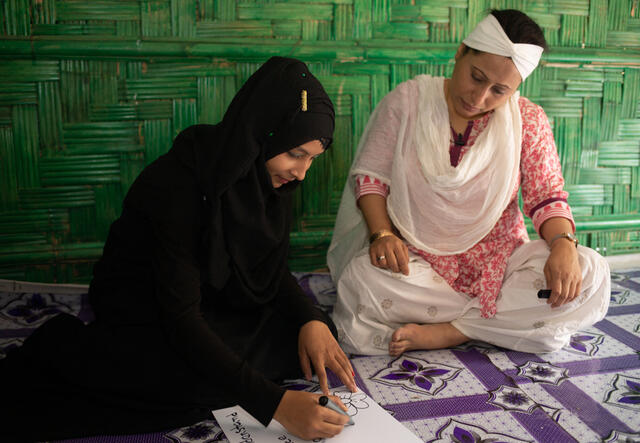
What is Intimate Partner Violence (IPV)?
Intimate Partner Violence (IPV), or ‘domestic violence’ is an all-too-common form of violence against women and girls. It refers to any behavior from a current or previous partner that causes harm—including physical aggression, sexual coercion, psychological abuse and controlling behaviors.
Globally, the UN reports that one in four women have been subjected to physical and/or sexual violence by an intimate partner at least once in their lifetime, and IRC research has shown that it is the most common form of violence against women and girls in humanitarian contexts.
Who is most at risk?
Gender-based violence can happen to anyone. However, it disproportionately affects women and girls. Those in crisis settings are at a double disadvantage due to their gender and their situation.
Women and girls from other diverse and marginalized communities face an even greater risk where gender inequality intersects with other forms of oppression.
Some factors that may increase the risk of experiencing GBV include:
- Living with a disability
- Youth and adolescence
- Older age
- Identifying as LGBTQ+
- Belonging to an ethnic minority
- Having refugee or migrant status
While we reference these different identities separately, each person holds multiple identities at once. For example, a woman who lives with a disability might also be an older refugee.
This is why it’s important to understand the concept of intersectionality—that a person faces different kinds of discrimination and risks due to a combination of their identities like gender, race, religion, or age. These parts of a person’s identity combine and affect how they experience life. GBV is often associated with violence against women and girls because gender inequality is one of the most widespread and deeply rooted forms of discrimination.
It is crucial to understand intersectionality when working to determine and provide prevention and response services. For instance, research has found that adolescent girls living in displacement are particularly at risk of being overlooked in emergency settings, where they may fall between the cracks of child protection services and those aimed at adult women.
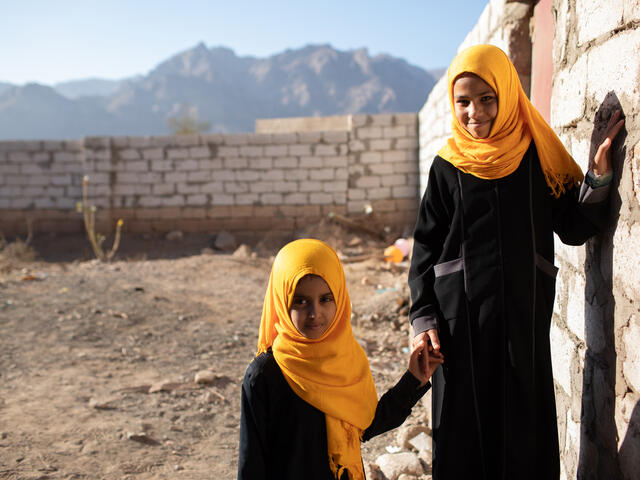
What causes gender-based violence in crisis settings?
Gender inequality, and the norms and beliefs that violence against women and girls is acceptable, cause gender-based violence. There are also many factors that increase the risk of GBV, with women and girls living through crises experiencing an increase in both the frequency and severity of GBV.
This is because the same conditions that contribute to conflict and forced displacement also accelerate GBV. These include:
1. Poverty
Research from What Works found that when families are pushed into poverty, harmful practices like child marriages increase. Young girls may be pulled out of education for marriage, to help with domestic tasks or to generate an income. Unemployment and economic distress in the household can increase instances of IPV, as well.
2. Breakdown of services
A collapse of community structure and the rule of law means women can find themselves without social support and protection systems in violent situations. It can also result in women and girls traveling great distances in search of food, water or fuel, further increasing risk of sexual harassment and assault.
3. Conflict and war
Rising numbers of conflicts globally are driving an increase in conflict-related sexual violence (CRSV). Without the rule of law, CRSV is often carried out with impunity. Armed forces may use rape as a weapon of war. Other forms of CRSV include sexual slavery, forced prostitution, forced pregnancy, forced abortion, enforced sterilization, forced marriage and other forms of sexual violence.
4. Displacement
Women living in refugee camps and other temporary accommodation can face safety issues that put them at greater risk. This can include having no locks on bathroom doors, joint male and female facilities, and inadequate lighting.
Women living as refugees may have to find new livelihoods, which can lead to an increased risk of exploitation.
Displaced women and girls in emergencies are often less visible. They’re not always included in national surveys or reports, which means their needs go unmet.
5. Stress in the home
Intimate partner violence is the most common form of violence women experience in humanitarian settings. IRC research suggests that IPV and child maltreatment and abuse occur more frequently when families experience an inability to meet their basic needs, alcohol and substance abuse and inconsistent income.
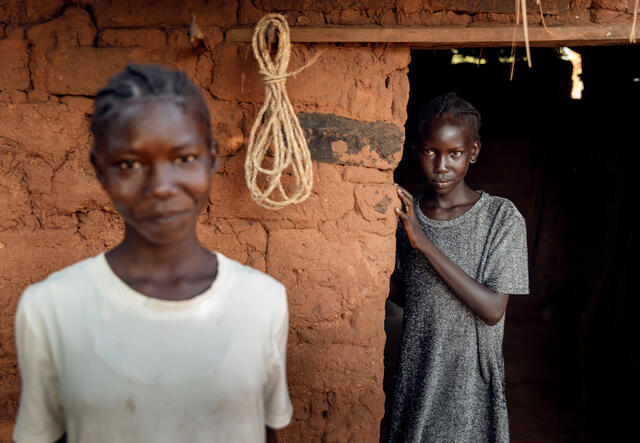
Effects of gender-based violence
Violence has a long lasting effect on survivors and their families. Impacts can range from physical harm to long-term emotional distress to fatalities. Rape and sexual assault can result in unwanted pregnancies, complications during pregnancy and birth, and sexually transmitted infections, including HIV.
Social and economic fallout from GBV can lead to a loss of livelihood and increased gender inequalities in the long term. Reporting or seeking services for GBV can lead to further threats of violence, social stigma and ostracization. GBV is also a key barrier to women and girls accessing other lifesaving services, such as food, shelter and healthcare.
Crises are not short-term occurrences. Climate-related disasters can create recurrent crises and many women and girls who are forcibly displaced can end up living in temporary accommodation for years.
This exposes women and girls to GBV for longer and can draw out and compound the effects of that violence for decades, hampering long-term resilience and empowerment.
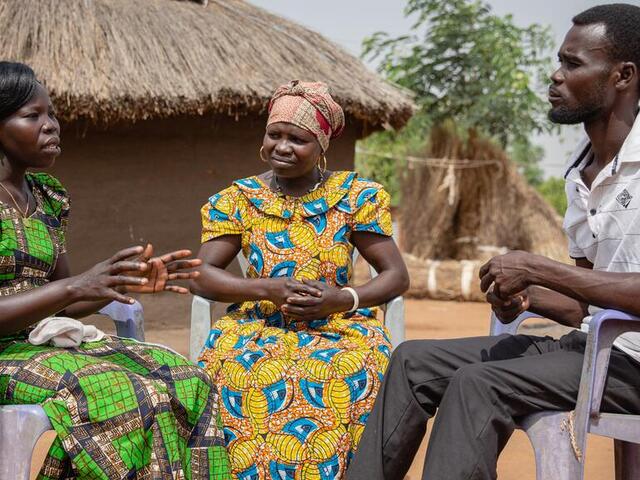
Preventing gender-based violence
While GBV continues to be a huge risk that women and girls face daily, there are ways to prevent it. Some of these include:
- Empowering women and girls across their lifetime by: Keeping girls in school; Empowering women economically; Using feminist approaches to tackle gender inequality, including in the home; Providing women and girls with safe spaces
- Ensuring women have access to cash
- Engaging male allies
- Including women in decision-making at leadership level
- Engaging with governments and duty bearers to uphold their responsibility to prevent and respond to violence
- Supporting local women-led and women's rights organizations and women’s rights movements
Comprehensive GBV services need to be established quickly in times of crisis to protect women and girls and reduce their exposure to violence, while increasing their chances of recovery and resilience. Solutions that prevent GBV and support survivors do more than reduce harm. They help entire societies strive. When women and girls are safe and empowered, families and communities grow stronger. Investing in these solutions is not only morally urgent—it’s a smart and far-reaching investment in global stability and equity.
Humanitarian organizations should bring a feminist approach to programming, that takes into account the unequal power balance between genders when designing support and interventions for crisis-affected populations.
Yet, despite knowing the scope of the problem, the serious and at times fatal effects of GBV, and that we can prevent and respond to it, GBV is still not prioritized with enough urgency during humanitarian responses.
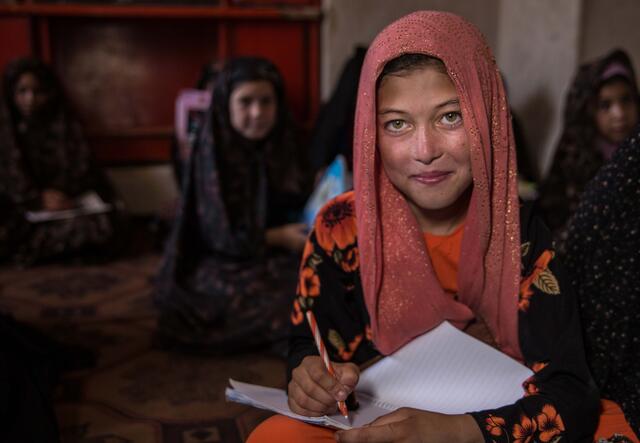
How does the IRC prevent GBV and support survivors?
The IRC prioritizes the needs of women and girls across its programming. We work to support the resilience and dignity of women and girls exposed to violence in crisis settings in over 40 countries worldwide.
The IRC delivers essential healthcare, GBV case management and psychosocial support to survivors, including through safe spaces and outreach teams. In 2024, women and girls visited IRC safe spaces nearly one million times, more than 160,000 attended psychosocial support sessions, and we enrolled over 40,000 GBV survivors in other direct support to safe and dignified services.
Throughout our programming, we focus on the needs of women and girls—helping those in crisis to survive, recover, and rebuild their lives. The IRC will continue to stand with survivors and communities to prevent GBV, break cycles of violence, and create safer futures for all.
How can I prevent GBV and help survivors?
Gender-based violence exists in every society—and we all have a role to play in ending it. By speaking out, challenging harmful norms and supporting survivors, individuals can help create safer communities for women and girls.
For nearly 30 years, the IRC has been working to prevent GBV and help survivors recover and rebuild their lives. But recent U.S. aid cuts are impacting the delivery of humanitarian aid, including critical GBV prevention and response programs.
Here’s how you can make a difference:
$42 can provide one woman or girl with birth control for a year, increasing her agency over her life.
$48 can cover the cost of school fees and supplies for a girl, reducing her risk of child marriage.
$450 can provide small business training to a woman in a crisis-affected area, empowering her economic independence. For women living in violent homes, this independence gives them a greater chance to leave.
$10,000 can provide critical and timely care for 150 women and girls who are survivors of sexual assault.
The IRC consistently earns top marks from charity watchdog groups for our efficient use of donor contributions and the effectiveness of our work.
More from the IRC
Learn more about how you can help the IRC continue our mission.
Get connected: Follow our Instagram, LinkedIn, Facebook, Bluesky and X accounts.
Stay up to date with the latest from the IRC.
Find out how every dollar spent makes a difference to someone's life:
